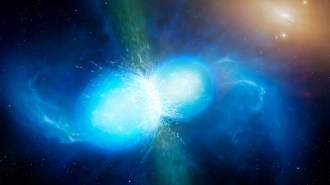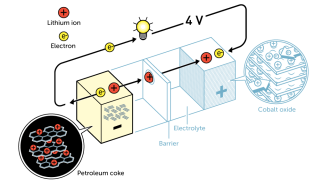Search Results
Hiding heat radiation
Students will answer questions about the Science News article “Coating provides infrared camouflage,” which explores the physics and potential technological applications of a material.

Saving Notre Dame’s Sound
This guide, based on the Science News article “Saving Notre Dame’s sound,” asks students to explore how scientists resurrect the acoustics of historic places, consider factors that affect how sound behaves to design a room with specific sound requirements, and measure and compare how sound changes in different environments.
A world of acoustics
Students will use decibel meters to understand how the volume of a sound changes as it travels away from a source. Concepts covered include sound waves, the inverse square law, absorption and reflection. The activity also asks students to consider how the characteristics of a space affect the sound.
Designing soundscapes
Drawing on their experiences with how sound behaves in different spaces, students will explore the engineering process by designing and sketching a room to meet specific sound requirements.
Sound science at Notre Dame
Students will answer questions about the Science News article “Saving Notre Dame’s sound,” which explores how scientists resurrect acoustics of historic places.

Strontium Found in Neutron Star Crash
This guide, based on the Science News article “Strontium found in neutron star crash,” asks students to explore how elements are created. An activity from the Digital Library will help students understand the life cycle of stars and how stars produce various elements.
How are elements created?
Students will explore how elements are created — in nature and in the lab — while focusing on the concepts of atomic structure, stability and stellar evolution.
Stellar smashup creates elements
Students will answer questions based on the Science News article “Strontium found in neutron star crash.”

Nobel Prize Winners Announced
This guide, based on Science News’ article “Nobel prize winners announced,” asks students to summarize the discoveries that won the prizes, create a timeline that puts one prize in context and explore activities related to batteries from our Digital Library.
And the Nobel science prizes go to…
Students will answer questions based on the Science News article “Nobel Prize winners announced.”

Computer Chip Milestone Reached
This guide, based on the Science News article “Computer chip milestone reached,” asks students to explore transistors and Moore’s Law. The activity leads students as they design a simple circuit out of logic gates.
Pushing computers to the limit
Students will answer questions based on the Science News article “Computer chip milestone reached.”